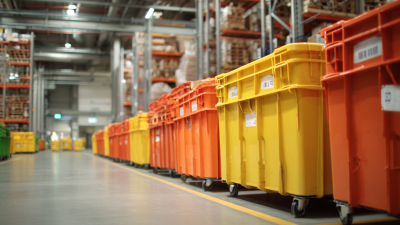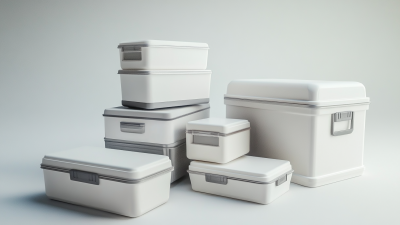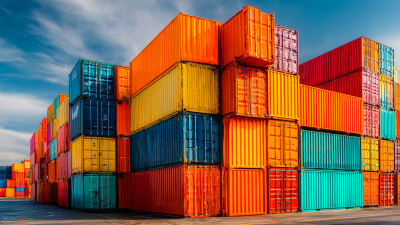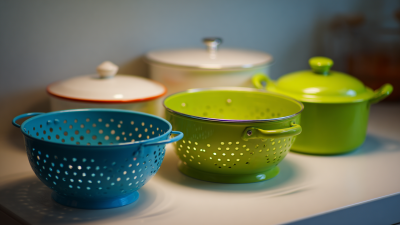Welcome to this website!

When preparing meals, ensuring optimal drainage and food safety is essential, and the choice of a Colander Basket plays a pivotal role in this process. According to industry reports, including a recent analysis by the Food Safety and Inspection Service, improper food handling can lead to foodborne illnesses affecting millions each year, emphasizing the importance of the tools we use in the kitchen. A suitable colander not only facilitates efficient drainage but also helps in maintaining hygiene standards by minimizing the risk of contaminating prepared foods.
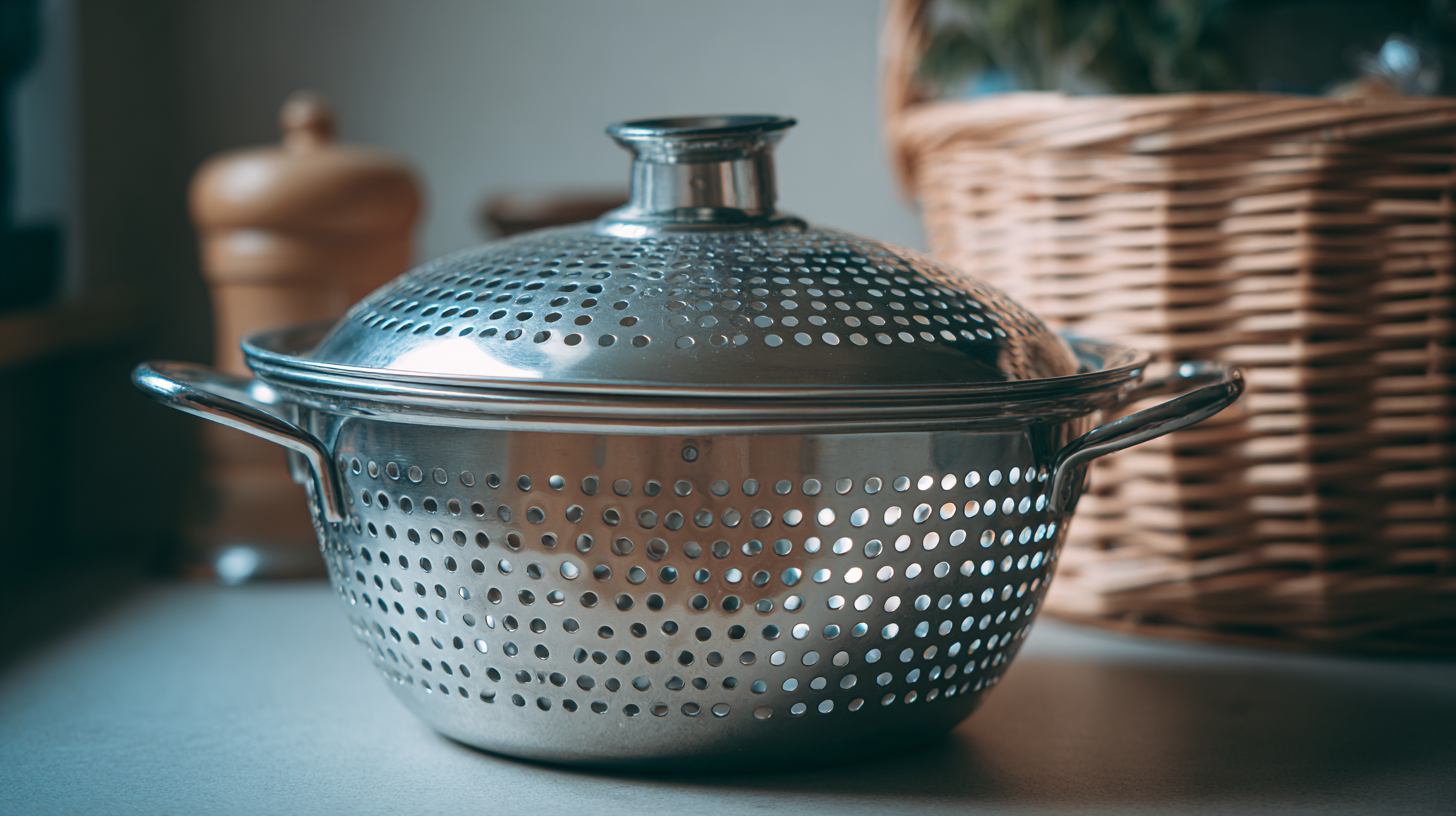
Furthermore, research from the International Journal of Food Microbiology has highlighted that materials used in kitchen utensils, like colanders, can significantly impact microbial growth and food safety. Therefore, selecting the right Colander Basket is crucial for both culinary success and safeguarding health, ensuring that food is properly cleaned and drained before cooking or serving.
When selecting a colander basket for kitchen use, it's essential to understand the different types available to ensure optimal drainage and food safety. Colanders primarily come in various materials, such as stainless steel, plastic, and silicone. Stainless steel colanders are durable and resistant to rust, making them ideal for long-term use, especially when draining hot ingredients like pasta. They also tend to have larger holes, which facilitate faster drainage. On the other hand, plastic colanders are lightweight and available in a variety of colors, which can add a decorative touch to the kitchen but may warp over time if exposed to heat.
Another consideration is the design of the colander. Some feature a deeper bowl shape, which is useful for rinsing grains or washing leafy vegetables, while others may have a flatter design that suits draining small pasta shapes. Additionally, colanders with sturdy handles allow for easy maneuvering, especially when dealing with heavy or hot foods. By understanding these distinctions, you can choose a colander that not only fits your cooking habits but also promotes food safety by ensuring thorough drainage and easy cleaning.
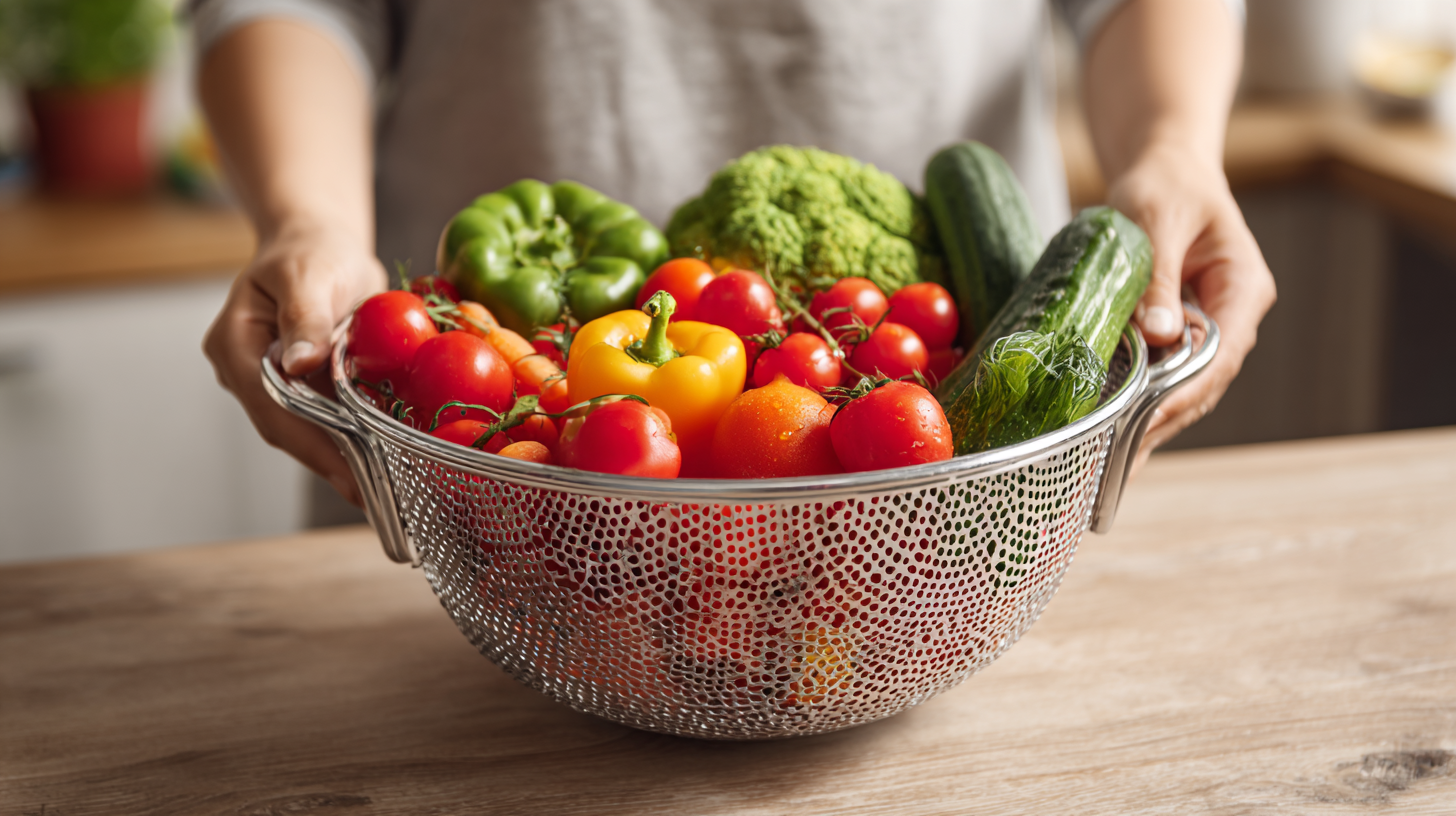 When choosing a colander basket for optimal drainage, several key features should be evaluated to ensure food safety and efficient use. First, the size and shape of the colander are crucial; experts recommend a diameter of at least 8 inches for larger tasks, as noted in the Food Safety and Inspection Service reports. This size allows for adequate drainage while preventing food from getting stuck or submerged in water, which can lead to bacterial growth.
When choosing a colander basket for optimal drainage, several key features should be evaluated to ensure food safety and efficient use. First, the size and shape of the colander are crucial; experts recommend a diameter of at least 8 inches for larger tasks, as noted in the Food Safety and Inspection Service reports. This size allows for adequate drainage while preventing food from getting stuck or submerged in water, which can lead to bacterial growth.
Material choice is another important consideration. Stainless steel colanders are preferred in both commercial and home kitchens due to their non-reactive properties and durability, as supported by data from the Food Grade Materials Association, noting that approximately 75% of food safety incidents are linked to improper storage and equipment. Additionally, colanders with perforations that are strategically placed can enhance drainage efficiency, with research indicating that larger holes can lead to faster draining times, crucial for prep work in busy kitchens. Selecting a colander that balances these features not only enhances functionality but also contributes to overall food safety standards.
When selecting a colander, the materials used play an essential role in ensuring both safety and durability. Stainless steel is the most popular choice among professionals and home cooks alike, known for its resistance to rust and staining, which contributes to a longer lifespan—often lasting over ten years with proper care. According to a report from the American Journal of Gastroenterology, stainless steel is non-porous, minimizing the risk of bacterial growth, particularly important when rinsing fruits, vegetables, or raw meats.
Another common material is plastic, which is lightweight and generally more affordable. However, not all plastics are created equal; FDA regulations require food-safe plastics to be free from harmful chemicals, such as BPA. It is estimated that using BPA-free colanders can significantly reduce the risk of chemical leaching when subjected to high temperatures. A study by the Washington State Department of Health highlighted that while plastic colanders are versatile, they may need to be replaced more frequently compared to their stainless-steel counterparts, leading to greater waste and higher long-term costs.
Lastly, silicone colanders are gaining traction for their flexibility and portability. They are heat-resistant and can easily be stored away when not in use. However, one should ensure that the silicone used is food-grade to avoid potential health hazards. Comprehensive research indicates that while silicone options can be durable, they too can degrade over time if not manufactured correctly, emphasizing the importance of choosing high-quality brands for both safety and longevity.
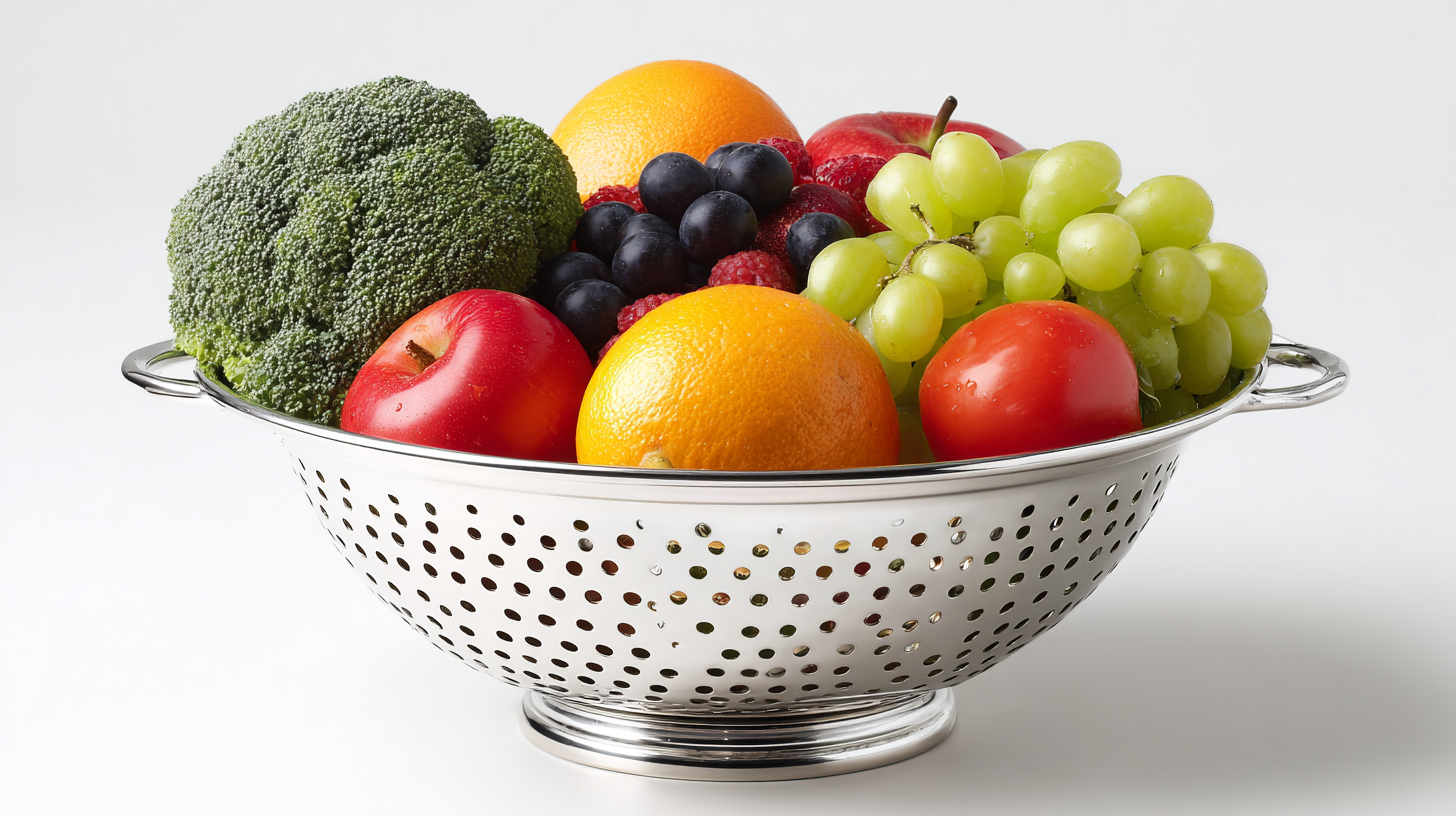
When it comes to selecting the right colander for your kitchen, understanding the various sizes and shapes available is crucial for optimal drainage and food safety. A well-chosen colander not only facilitates effective water drainage but also prevents contamination during food preparation. For instance, larger colanders can accommodate bulkier items like pasta or vegetables, while smaller versions are perfect for rinsing grains or herbs. The design also matters; a colander with wide holes ensures quick drainage, while deeper models can hold more volume without risking spills.
In addition to size, shape plays a pivotal role in functionality. Standard round colanders are ideal for most tasks, but over-the-sink models provide the advantage of space-saving and easy access to running water. Moreover, the choice of material—be it plastic, stainless steel, or silicone—can enhance durability and ease of cleaning. Investing in a versatile colander that meets your specific cooking needs will not only simplify your meal prep but also ensure your ingredients remain safe and properly drained.
Maintaining and cleaning your colander is essential for ensuring its longevity and optimal performance. After each use, it’s vital to wash your colander thoroughly with warm, soapy water. This helps remove food particles and prevents bacteria from building up. For those stubborn spots or stains, a soft scrub brush can be utilized. It's important to avoid abrasive cleaners or scouring pads, as they can scratch the surface and compromise the material, especially if it’s plastic or coated.
Additionally, make it a habit to air dry your colander completely after washing. This not only prevents water spots but also reduces the risk of mold or mildew development. Periodically, you should inspect for any signs of wear or damage. If you notice rust or degradation, particularly in metal colanders, it might be time to replace it to maintain food safety standards. Taking these simple steps will ensure that your colander remains a reliable kitchen tool for years to come.
| Feature | Importance | Maintenance Tips | Material Options |
|---|---|---|---|
| Size | Affects drainage and usability for various foods | Regularly clean to avoid build-up | Plastic, Stainless Steel, Silicone |
| Drainage Holes | Critical for quick and efficient peeling and rinsing | Ensure holes are not clogged | Perforated metal, plastic with holes |
| Stability | Prevents tipping and spillage | Store in a stable environment | Weighted base options, non-slip feet |
| Ease of Cleaning | Prevents food safety issues | Wash with warm soapy water after each use | Dishwasher safe materials are preferable |
| Versatility | Can be used for various preparing methods | Hygienically store when not in use | Multi-functional designs, collapsible options |

